The national parks in the amazon have become the protectors of the earth, in an increasingly polluted world, the “lungs of the earth” have the important task of cleaning the air and protecting the diverse species of life that live in their jungles. In their jungles are found species of flora and fauna that are not found anywhere else in the world. Do you want to know the most famous parks?
In this post, we invite you to get to know the most beautiful national parks in the Amazon. From the unexplored beauty of its landscapes to the destinations you can visit at least once in your life.
What are National Parks in the Amazon?
National parks in the Amazon are large tropical areas that are protected by the government to protect the unique biodiversity of this vast region. But how is a national park chosen? They are chosen to protect key ecosystems and endangered species such as tapirs or spectacled bears as well as local communities.
In the Amazon, the largest region of tropical rainforest in the world, we find the world’s most important national parks that are considered the “lungs of the earth”. In addition, these areas are the refuge of flora and fauna species, some of which are not found anywhere else on the planet, living protected by law.
You might be interested: Ecotourism in Amazon Rainforest of Peru
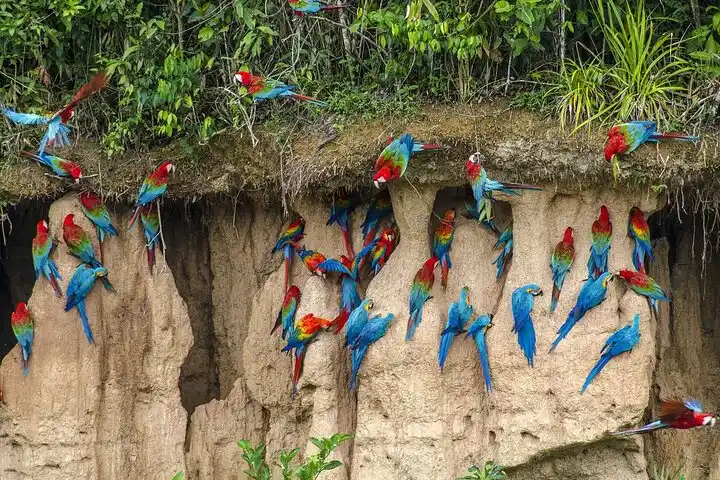
Why National Parks are important?
These vast green lungs are responsible for producing around 20% of the oxygen we breathe, helping to maintain the planet’s balance. They also play a crucial role in climate regulation, absorbing large amounts of carbon dioxide and combating climate change.
Most fascinating is the biodiversity they harbor. The Amazon is home to more than 400,000 species of plants, 2.5 million insects and more than 1,300 species of birds. Some of the most emblematic animals, such as capybaras in Peru, the spectacled bear, the tapir and the pink dolphin, find refuge in these parks. And it is not only the animals that benefit, but also the indigenous communities that live in harmony with nature. Without these parks, all this would be in grave danger!
7 National Parks in the Amazon
The Amazon is much more than a jungle: it’s a universe of life, cultures, and surprising landscapes. Throughout its expanse, there are national parks that protect unique ecosystems and offer unforgettable experiences to those who dare to explore them. From Peru to Brazil, passing through Ecuador and Argentina, these seven parks are gateways to the continent’s deepest nature.
1. Manu National Park (Peru)
Manu National Park in Peru is one of the most biodiverse places on the planet. Located between the regions of Cusco and Madre de Dios, its territory stretches from the high Andes mountain range to the Amazon plain, allowing it to host an incredible variety of flora and fauna. We recommend taking Manu tours which cover the entire Amazon region. Here you can find species such as jaguars, tapirs, macaques, and more than 1,000 bird species. To get there, you can take flights and day trips from Cusco to the city of Puerto Maldonado, where the park entrance begins. A paradise for nature lovers!
You might be interested: Visit Peru in July 2025: Best travel guide to destinations

2. Yasuni National Park (Ecuador)
Yasuni National Park in Ecuador is home to endangered species such as the pink river dolphin and the green anaconda. Yasuni is known for its unique biodiversity, with more than 600 bird species and 10,000 plant species. It’s located in the province of Orellana, and to get there, you can fly from Quito to Coca and then travel by road or boat.
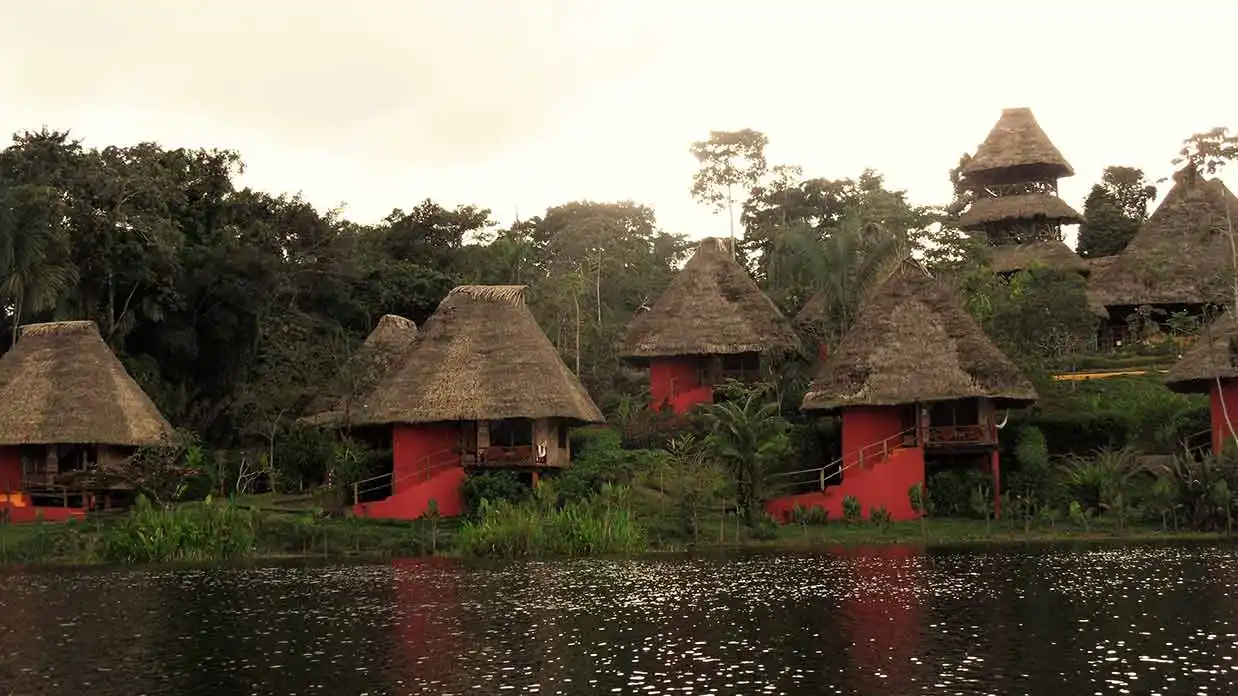
3. Iguazu National Park (Brazil/Argentina)
Although not located directly in the Amazon basin, Iguazu National Park, shared between Brazil and Argentina in the southern Amazon region, can be accessed from the city of Foz do Iguaçu in Brazil or Puerto Iguazú in Argentina. This park is famous for the impressive Iguazu Falls, one of the seven natural wonders of the world. With its enormous network of waterfalls, it offers a unique experience, with trails, walkways, and activities such as boat rides near the falls.

4. Jau National Park (Brazil)
Jau National Park, in Brazil, is a vast expanse of tropical rainforest that is part of the Amazon river system. It can be accessed from Manaus, where boats can be taken to navigate the rivers surrounding the park. It is home to indigenous tribes, as well as species such as the jaguar, the puma, and various species of monkeys.
5. Pacaya Samiria National Reserve (Peru)
The Pacaya Samiria national reserve is located in the Loreto region of Peru. You can reach the reserve from Iquitos, the nearest city, and explore its rivers and lagoons by boat. It is one of the largest reserves in the Peruvian Amazon. Known as the “jungle of the pink dolphins,” this reserve is famous for its extensive floodplain forests and diverse wildlife.
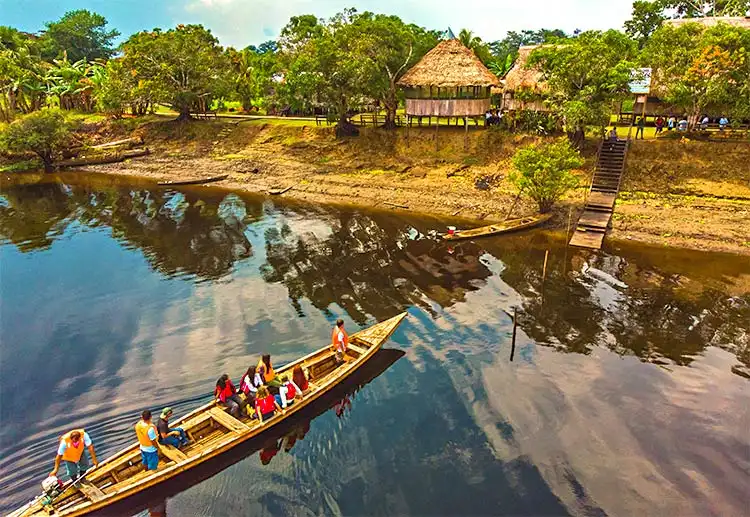
6. Anavilhanas National Park (Brazil)
Anavilhanas National Park, located on the Negro River in Brazil, is one of the largest parks in the Amazon region. Its main feature is the chain of more than 400 islands, which make the park a labyrinth of water and land. Anavilhanas is home to many animal species, including caimans, manatees, and exotic birds. To get there, you can fly from Manaus, the nearest city, and take a boat to explore the park.

7. Tambopata National Reserve (Peru)
The Tambopata National Reserve is also located in Peru and is one of the most popular destinations for nature lovers. Located in the Madre de Dios region, Tambopata is famous for its biodiversity, which includes species such as the macaque, the jaguar, and the pink river dolphin. The reserve is also home to the famous saltwater “blowout,” where macaws gather to feed on minerals. To visit, you can take a flight from Cusco to Puerto Maldonado and then cruise down the Tambopata River. This is undoubtedly one of the best options for enjoying the Peruvian Amazon.
You might be interested: San Juan Festival in Peru 2025
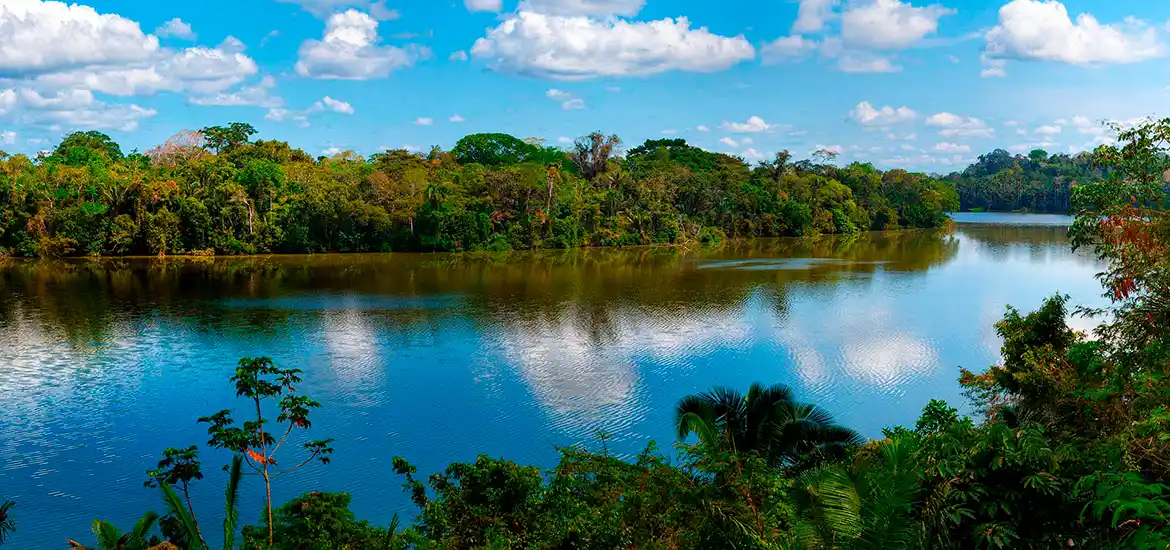
Guide for visiting Amazon National Park
Exploring the National Parks in the Amazon is a unique experience in the middle of the Peruvian jungle, full of life, sounds and landscapes that are hard to forget. But to enjoy it to the fullest and safely, it is important to be prepared. Here are some simple tips on what to bring and how to dress.
What to wear?
In the jungle, the weather can change quickly: intense heat, sudden rains and high humidity. For this reason, it is best to opt for comfortable and light clothing that also protects you.
- Long-sleeved shirts or polo shirts: they help protect you from the sun and mosquitoes.
- Long and light pants: made of thin and fresh fabric. Avoid jeans because they take a long time to dry if they get wet.
- Waterproof jacket or poncho: always useful in case of rain.
- Hat or cap with a wide brim: to protect you from the sun.
- Sturdy shoes or trekking boots: if they are waterproof, the better. There are muddy areas or streams to cross.
- Sandals or extra sneakers: in case the first ones get wet.
What to carry in your backpack
Remember that the national parks of the Amazon are extensive trekking areas, so carrying a heavy backpack is not a good idea, try to carry only what is necessary on your back.
- Insect repellent (preferably natural or with DEET).
- Sun block, even on cloudy days.
- Reusable water bottle (in many lodges you can refill it).
- Light snacks such as dried fruit, cereal bars or nuts.
- Flashlight or headlamp with extra batteries, very useful if you stay in the tambopata lodges inside the park.
- Binoculars to observe birds and animals from a distance.
- Camera or cell phone with extra battery (and waterproof case, if you have one).
- Basic first aid kit: Band-aids, alcohol gel, pain reliever, stomach pills.
- Toilet paper or biodegradable wet wipes.
- Waterproof or dry bag to protect your things if it rains.
You might be interested: Amazon rainforest packing list: Complete guide for your trip

Tips for visiting the National Parks in the Amazon
1. Bring ziplock or airtight bags
They can be used to store your cell phone, documents, money and other objects that cannot get wet. You can also use them to separate your clean clothes from wet or dirty ones.
2. Wear neutral or earth-colored clothing
Avoid brightly colored clothing (such as red, orange or neon). These colors may attract insects or scare away the animals you want to observe. Guides often wear green, brown or beige for a reason.
3. Wet your clothing before going out in extreme heat
On long hikes, lightly wetting your hat or shirt collar can help you better withstand the heat and humidity.
4. Carry a thin scarf or multi-purpose cloth
It can protect you from the sun, serve as a towel, cover your face if it’s too dusty, or even as a makeshift pillow.
5. Do not use perfume or strong-smelling creams
Sweet or artificial smells can attract mosquitoes or bees, and also alter the behavior of animals.
6. Carry cash in small bills
Many places in or near the parks do not accept cards, and it is common that they do not have change for large bills.
7. Turn off your camera’s flash
Not only does it scare animals away, but in some cases it can damage their vision. Besides, photos with natural light usually come out much better.
You might be interested: Inti Raymi in Cusco 2025: The magic festival of the Sun
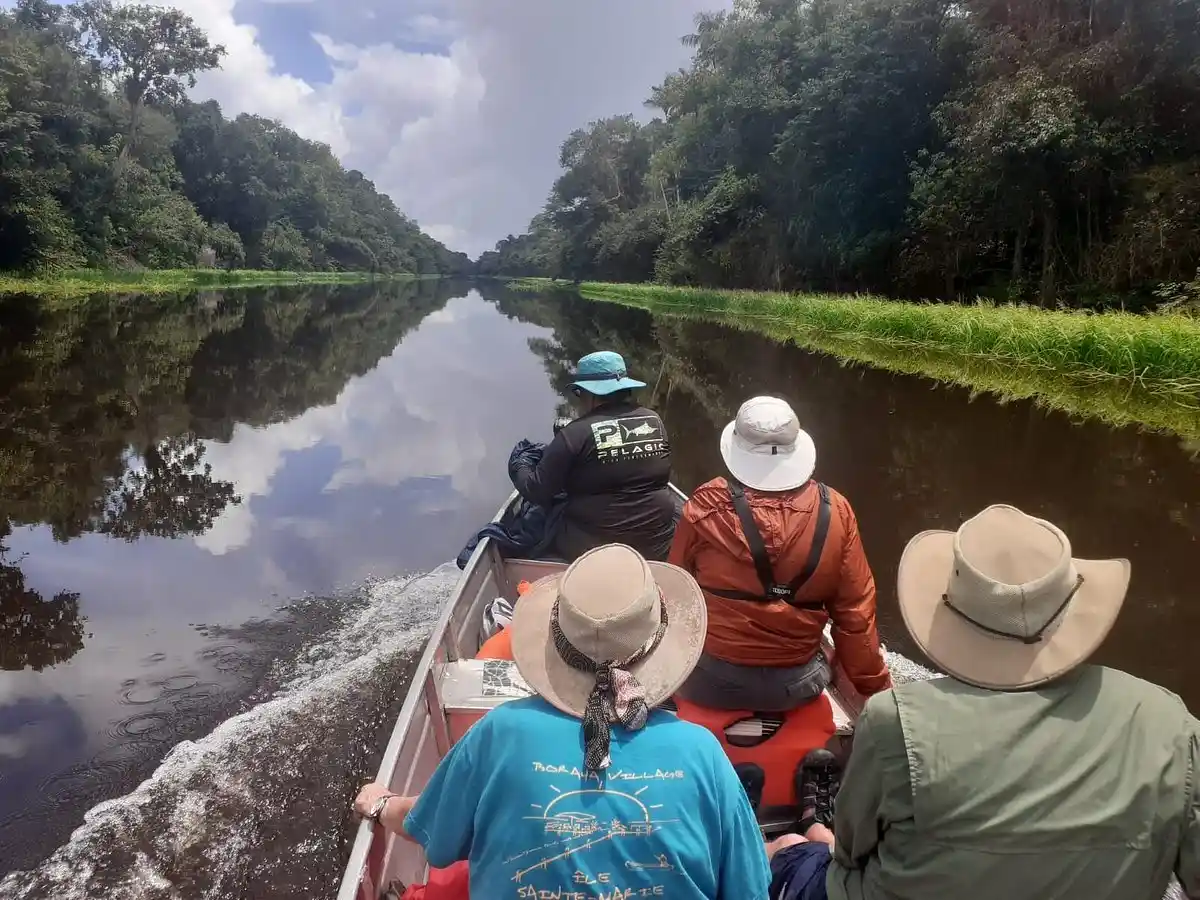
Frequently asked questions about National parks in the amazon
Here we answer frequently asked questions about the national parks of the Amazon, so if you are planning a trip to the jungle and want to know more about how to visit its national parks, we will answer the most common questions.
1. What is the best time to visit national parks in the Amazon?
The best time is usually between May and October, when there is less rainfall and it is easier to walk the trails or take boat rides. Also, in the dry season it is more likely to see animals.
2. Are there eco-lodges or accommodations inside the parks?
The best time is usually between May and October, when there is less rainfall and it is easier to walk the trails or take boat rides. Also, in the dry season it is more likely to see animals.
3. Are Amazon national parks safe for tourists?
The best time is usually between May and October, when there is less rainfall and it is easier to walk the trails or take boat rides. Also, in the dry season it is more likely to see animals.
4. Are there guided tours available in Amazon national parks?
Yes, most offer guided tours of the Amazon with local experts to help you better understand the flora, fauna and secrets of the jungle. We recommend you to go with a guide, it is also safer and ensures you do not miss anything important.
5. Is manu national park part of the amazon?
Yes, most offer guided tours of the Amazon with local experts to help you better understand the flora, fauna and secrets of the jungle. We recommend you to go with a guide, it is also safer and ensures you do not miss anything important.
6. Do national parks allow dogs?
No, in general, dogs and pets are not allowed because they can alter the behavior of wild animals or transmit diseases. It is best to leave them at home for their safety and that of the ecosystem.



